Roll Cages: Enhancing Efficiency and Safety in Logistics
Date Posted:19 August 2024
Investing in high-quality roll cages not only supports operational excellence but also contributes to cost savings, sustainability goals, and customer satisfaction in today's dynamic marketplace.
In the realm of logistics and warehousing, roll cages serve as indispensable tools for transporting goods efficiently and safely. These versatile containers are designed to streamline operations, optimize storage space, and protect items during handling and transportation. This article explores the benefits, types, and practical applications of roll cages, highlighting their crucial role in modern supply chains.
Benefits of Roll Cages
1. Improved Efficiency: Roll cages are instrumental in improving efficiency within logistics operations. They facilitate the organized movement of goods, allowing multiple items to be transported in one trip. This reduces the time and labor required for manual handling, enhancing overall workflow productivity.
2. Space Optimization: Roll cages are designed to maximize storage space both in transit and in storage areas. Their stackable design and collapsible sides enable compact nesting when not in use, minimizing storage footprint and optimizing warehouse or retail space.
3. Durability and Protection: Constructed from robust materials such as steel or reinforced plastics, roll cages offer durability and protection for transported goods. They feature sturdy frames, secure latching mechanisms, and optional shelves or dividers to prevent damage and ensure the safe delivery of fragile or valuable items.
4. Versatility: Roll cages come in various configurations to suit different industries and applications. Some models include shelves for organizing small items, while others feature hanging bars for garments or perishable goods. Their versatility makes them suitable for retail distribution, hospitality, healthcare, and industrial logistics.
5. Safety: Roll cages enhance workplace safety by reducing manual handling risks. They are equipped with ergonomic handles, smooth-rolling casters, and brakes for secure movement and stability. Safety features such as corner buffers and non-slip surfaces further protect both operators and transported goods.
Types of Roll Cages
1. Standard Roll Cages: Standard roll cages feature a solid frame with mesh or solid sides and a base platform. They are versatile for transporting a wide range of goods in retail, distribution centers, and manufacturing environments.
2. Nestable Roll Cages: Nestable roll cages have collapsible sides that fold inward, allowing multiple cages to nest together when empty. This design minimizes storage space requirements and simplifies return logistics in retail and supply chain operations.
3. Security Roll Cages: Security roll cages feature lockable doors or lids to protect high-value merchandise or sensitive items during transit or storage. They are commonly used in retail settings for loss prevention and inventory control.
4. Hygienic Roll Cages: Hygienic roll cages are made from materials such as stainless steel or plastic with smooth, easy-to-clean surfaces. They are ideal for transporting food, pharmaceuticals, and other hygiene-sensitive goods in compliance with health and safety regulations.
5. Laundry Roll Cages: Laundry roll cages are specifically designed for transporting linens, uniforms, and textiles in hospitality, healthcare, and commercial laundry facilities. They feature open mesh sides for ventilation and easy visibility of contents.
Practical Applications of Roll Cages
1. Retail Distribution: In retail operations, roll cages streamline the handling and distribution of merchandise from warehouses to store shelves. They enable efficient restocking, reduce aisle congestion, and support seamless inventory management.
2. E-commerce Fulfillment: E-commerce fulfillment centers use roll cages to process and prepare orders for shipping. They facilitate the sorting, packing, and staging of packages for timely delivery to customers, enhancing operational efficiency and order accuracy.
3. Hospitality and Healthcare: Hotels, resorts, and healthcare facilities utilize roll cages for transporting linens, towels, medical supplies, and equipment. Roll cages with hygienic designs ensure cleanliness and compliance with sanitation standards in sensitive environments.
4. Manufacturing and Assembly: In manufacturing facilities, roll cages facilitate the movement of raw materials, components, and finished products between production areas. They support lean manufacturing practices by minimizing handling time and optimizing workflow efficiency.
5. Airport and Logistics Hubs: Airports and logistics hubs employ roll cages for transporting baggage, cargo, and catering supplies across terminals and aircraft. Roll cages with secure fastenings and ergonomic features enhance airport operations and passenger services.
Choosing the Right Roll Cage
When selecting roll cages for specific applications, consider the following factors:
1. Load Capacity: Determine the maximum weight capacity needed for transporting goods. Choose roll cages with sturdy frames and casters that can support heavy loads without compromising stability or maneuverability.
2. Size and Dimensions: Select roll cages with dimensions that accommodate the size and shape of the items being transported. Consider door openings and shelf configurations for easy loading and unloading of goods.
3. Material and Construction: Opt for roll cages made from durable materials suited to the operational environment. Stainless steel offers strength and corrosion resistance, while lightweight plastics are ideal for hygienic and food-safe applications.
4. Mobility and Maneuverability: Choose roll cages with smooth-rolling casters, swivel wheels for easy maneuverability, and brakes for secure stationary positioning. Ergonomic handles and push/pull options enhance operator comfort and control.
5. Customization Options: Look for roll cages that offer customization options such as adjustable shelves, removable partitions, or security features tailored to specific operational needs and industry requirements.
Roll cages are essential assets that enhance efficiency, safety, and space optimization in logistics and supply chain operations. Whether used in retail distribution, e-commerce fulfillment, healthcare facilities, or manufacturing environments, roll cages streamline the movement and protection of goods while reducing manual handling risks. By selecting the right type of roll cage based on load capacity, size, material, and mobility features, businesses can optimize workflow efficiency, improve inventory management, and ensure the safe and secure transport of goods throughout their supply chain. Investing in high-quality roll cages not only supports operational excellence but also contributes to cost savings, sustainability goals, and customer satisfaction in today's dynamic marketplace.





























































































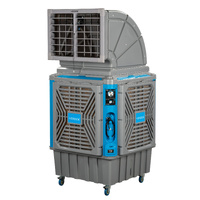




















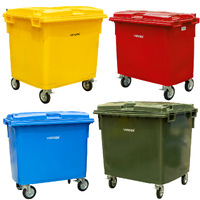








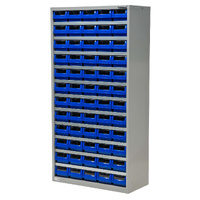




 Trolleys & Hand Trucks
Trolleys & Hand Trucks Cage Trolleys
Cage Trolleys Cleaning Carts & Trolleys
Cleaning Carts & Trolleys Construction Trolleys
Construction Trolleys Custom Trolleys
Custom Trolleys Hand Trucks & Dollies
Hand Trucks & Dollies Laundry/Linen Trolleys
Laundry/Linen Trolleys Lifting Trolleys
Lifting Trolleys Order Picking Trolleys
Order Picking Trolleys Panel Cart Trolleys
Panel Cart Trolleys Platform Trolleys
Platform Trolleys Powered Trolleys
Powered Trolleys Shelf & Tiered Trolleys
Shelf & Tiered Trolleys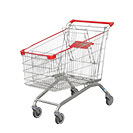 Shopping Trolleys
Shopping Trolleys Stainless Steel Trolleys
Stainless Steel Trolleys Tool Trolleys
Tool Trolleys Utility & Service Carts
Utility & Service Carts Lifting & Handling Equipment
Lifting & Handling Equipment Forklift Attachments
Forklift Attachments Jib Attachments
Jib Attachments Lifting Hoists & Pallet Hooks
Lifting Hoists & Pallet Hooks Load Skates & Tow Tugs
Load Skates & Tow Tugs Manual Stackers & Lifters
Manual Stackers & Lifters Pallet Jacks
Pallet Jacks Pallet Lifters
Pallet Lifters Pallet Rotators & Dispenser
Pallet Rotators & Dispenser Powered Pallet Trucks & Electric Lifters
Powered Pallet Trucks & Electric Lifters Scissor Lift Trolleys and Tables
Scissor Lift Trolleys and Tables Conveyor Equipment
Conveyor Equipment Conveyor Frames & Stands
Conveyor Frames & Stands Roller & Skate Conveyors
Roller & Skate Conveyors Ladders & Access Equipment
Ladders & Access Equipment Container & Yard Ramps
Container & Yard Ramps Ladders & Step Stools
Ladders & Step Stools Work Platforms & Crane Cages
Work Platforms & Crane Cages Drum Handling Equipment
Drum Handling Equipment Drum Storage & Bunding
Drum Storage & Bunding Drum Trolleys & Lifters
Drum Trolleys & Lifters Forklift Drum Handling
Forklift Drum Handling Waste Handling & Bins
Waste Handling & Bins Bin Lifters & Tippers
Bin Lifters & Tippers Plastic Waste & Wheelie Bins
Plastic Waste & Wheelie Bins Steel Waste & Tipping Bins
Steel Waste & Tipping Bins Waste Carts
Waste Carts Dangerous Goods Storage & Spillage
Dangerous Goods Storage & Spillage Aerosol Cans Storage Cages
Aerosol Cans Storage Cages Bunded Pallets & Storage
Bunded Pallets & Storage Corrosive Goods Storage Cabinets
Corrosive Goods Storage Cabinets DG Storage & Trolleys
DG Storage & Trolleys Flammable Liquid Cabinets
Flammable Liquid Cabinets Forklift Gas Storage Cages
Forklift Gas Storage Cages Site Storage
Site Storage Spill Kits
Spill Kits Shelving & Storage Equipment
Shelving & Storage Equipment Stillage & Transport Cages
Stillage & Transport Cages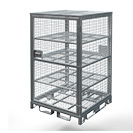 750 Series Cage Configurations
750 Series Cage Configurations Heavy Duty Cabinets
Heavy Duty Cabinets Heavy Duty Shelving
Heavy Duty Shelving Mega Bins & Pallets
Mega Bins & Pallets Packing & Workbenches
Packing & Workbenches Parts Trays & Stor-Pak Bins
Parts Trays & Stor-Pak Bins Pegboard & Louvre Panels
Pegboard & Louvre Panels Plastic Bins & Crates
Plastic Bins & Crates Plastic Handling Solutions Bins
Plastic Handling Solutions Bins Plastic Pallets
Plastic Pallets Stack & Nest Bins
Stack & Nest Bins Pallet Racking Accessories
Pallet Racking Accessories Workplace Equipment
Workplace Equipment Modular Workbenches
Modular Workbenches Electric Height-Adjustable Workbenches
Electric Height-Adjustable Workbenches Floor Matting
Floor Matting General Workplace Equipment
General Workplace Equipment Industrial Weighing Scales
Industrial Weighing Scales Packaging Machinery
Packaging Machinery Stationery Cupboards
Stationery Cupboards Storage and Stillage Cages
Storage and Stillage Cages Tool Trolleys
Tool Trolleys Tooling Cabinets
Tooling Cabinets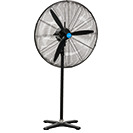 Workshop Fans and Coolers
Workshop Fans and Coolers Safety Barriers, PPE & Signage
Safety Barriers, PPE & Signage Barriers & Bollards
Barriers & Bollards First Aid Equipment
First Aid Equipment Gloves, Knives and PPE
Gloves, Knives and PPE Signage
Signage Cleaning & Site Supplies
Cleaning & Site Supplies Cleaning Equipment
Cleaning Equipment Cleaning Trolleys
Cleaning Trolleys Rubbish Bins
Rubbish Bins Signs & Traffic Supplies
Signs & Traffic Supplies Construction Equipment
Construction Equipment Construction Trolleys
Construction Trolleys Waste Handling
Waste Handling General Site Equipment
General Site Equipment Concrete Equipment
Concrete Equipment Site Storage
Site Storage Lifting Equipment
Lifting Equipment Verdex Specials
Verdex Specials










